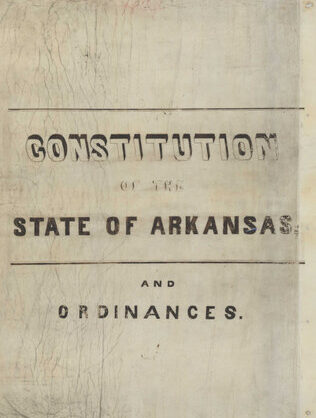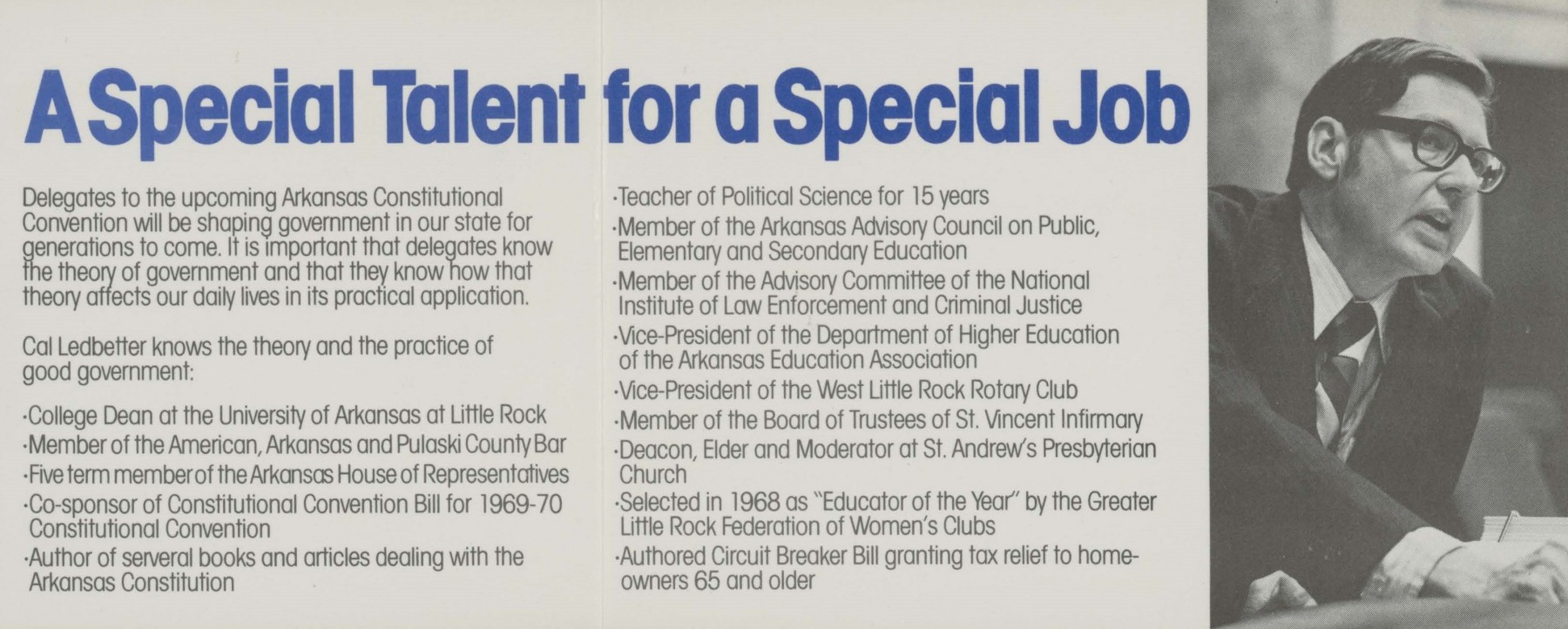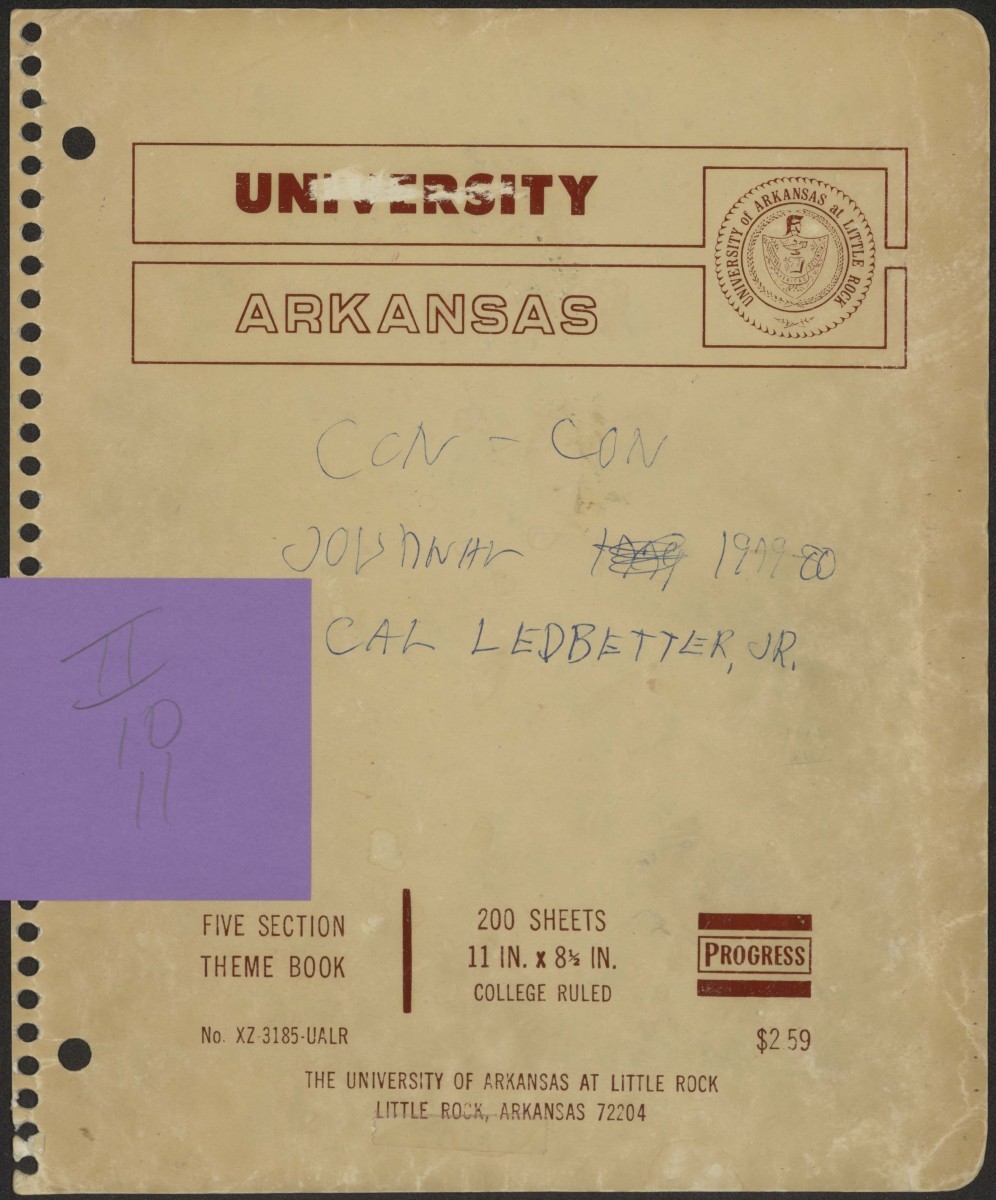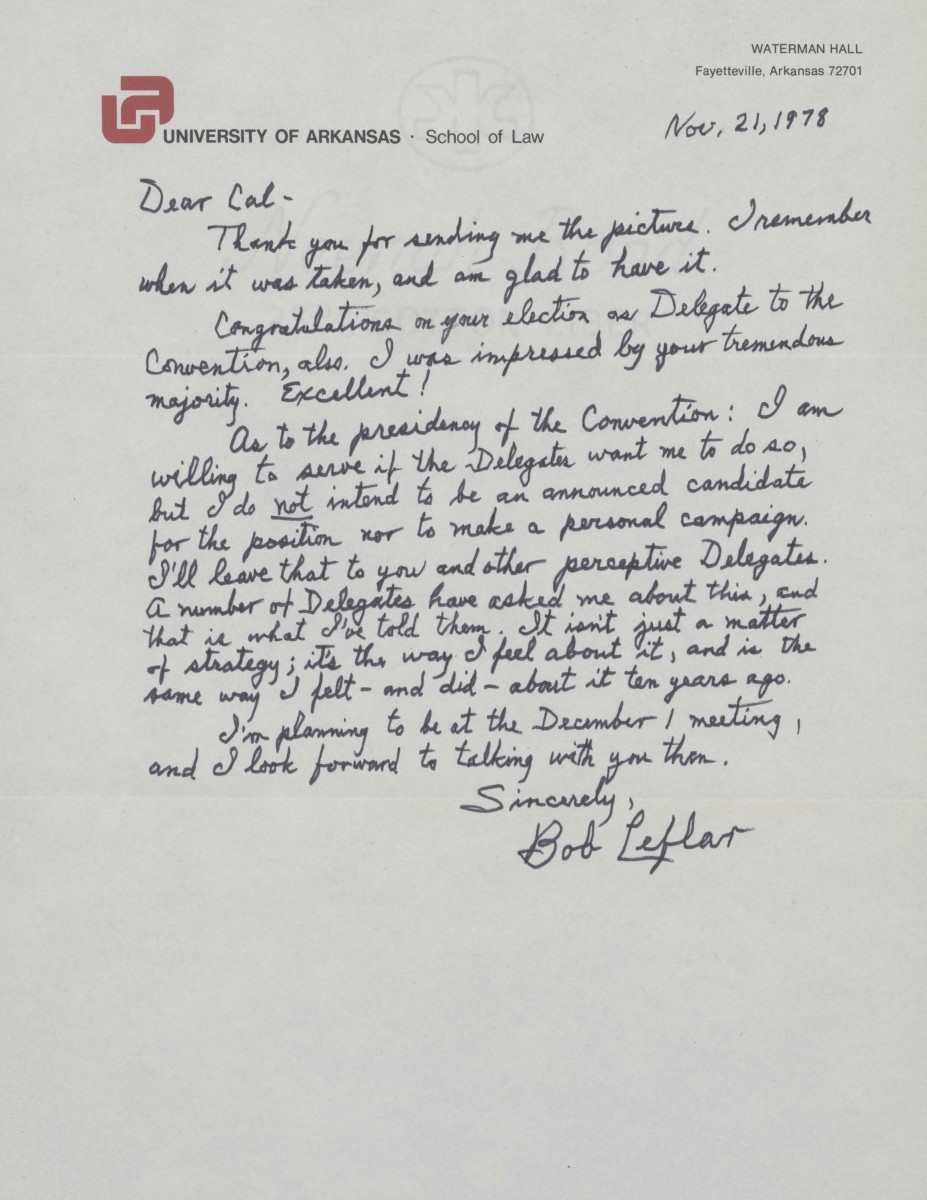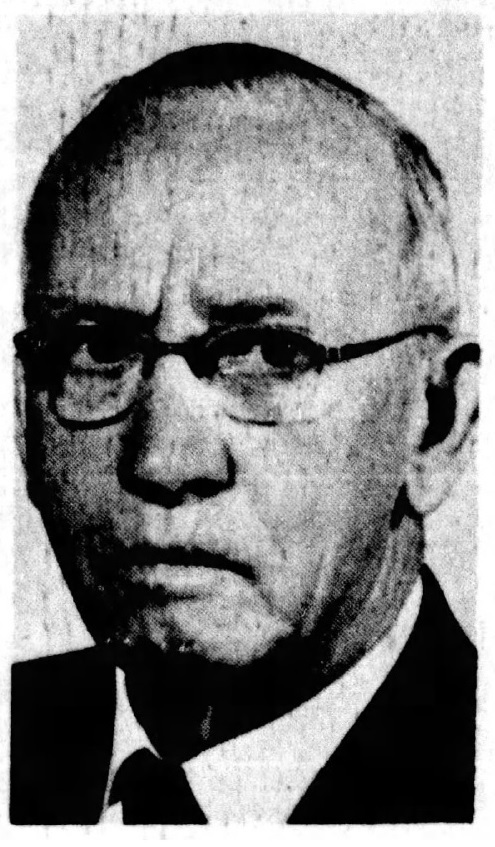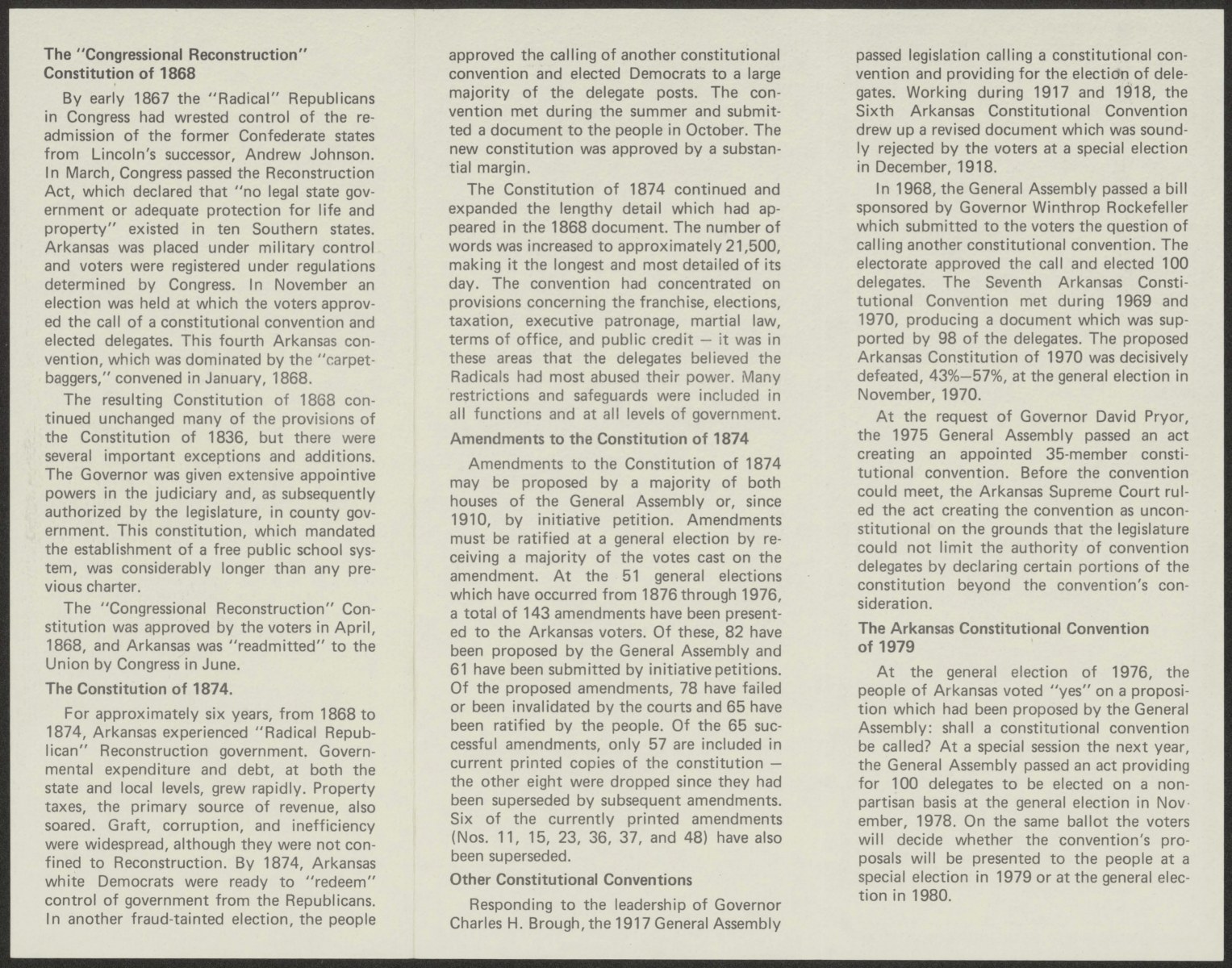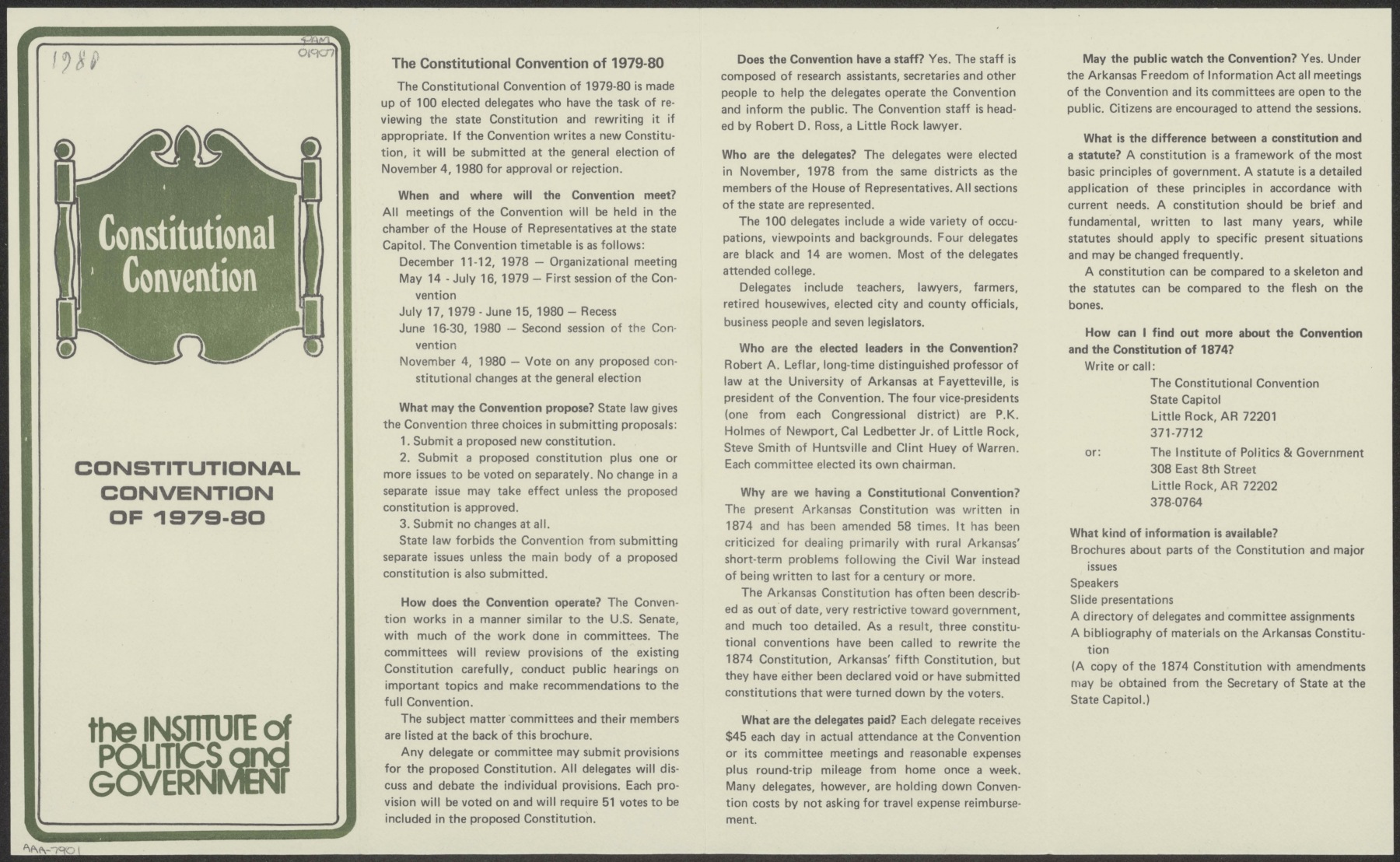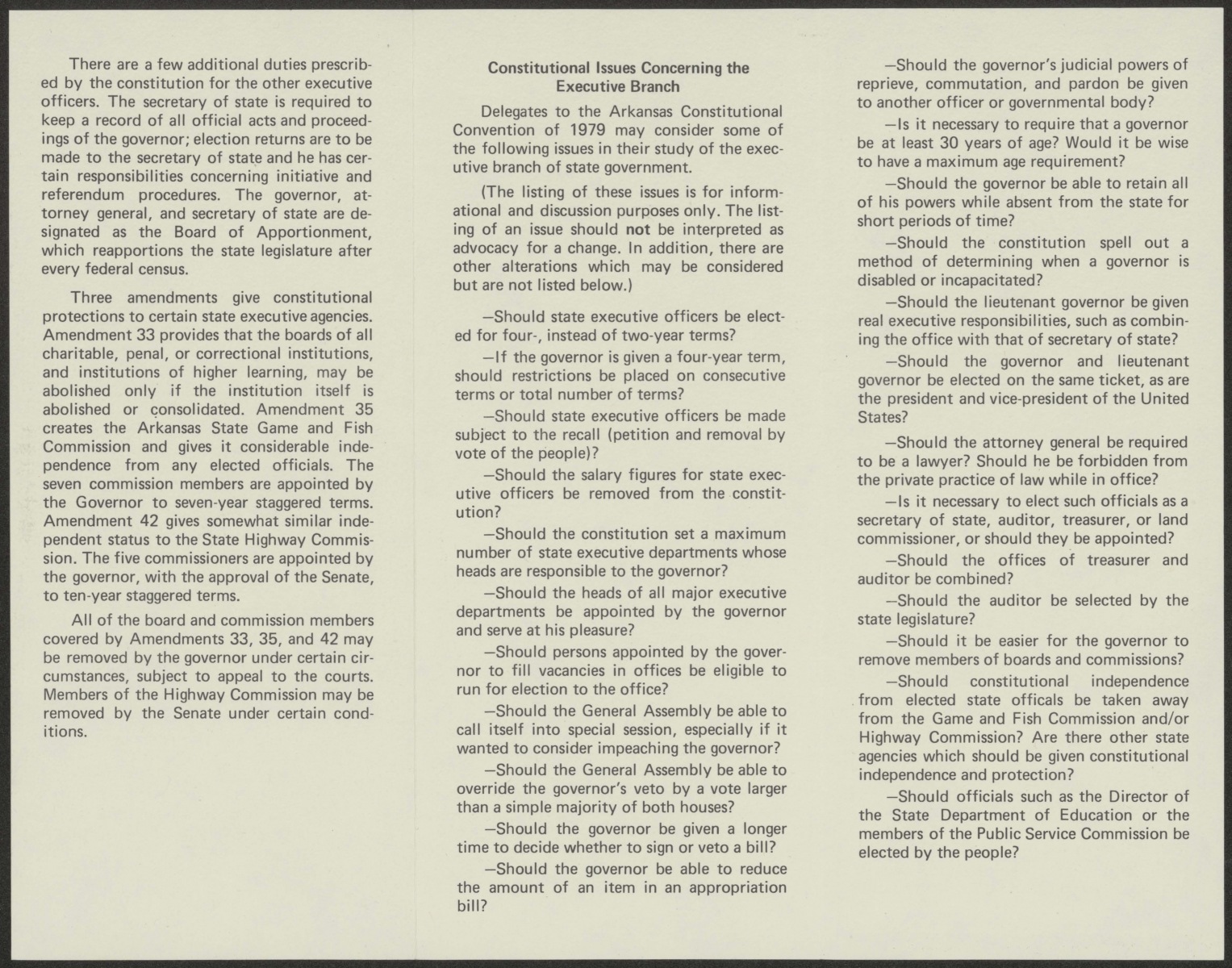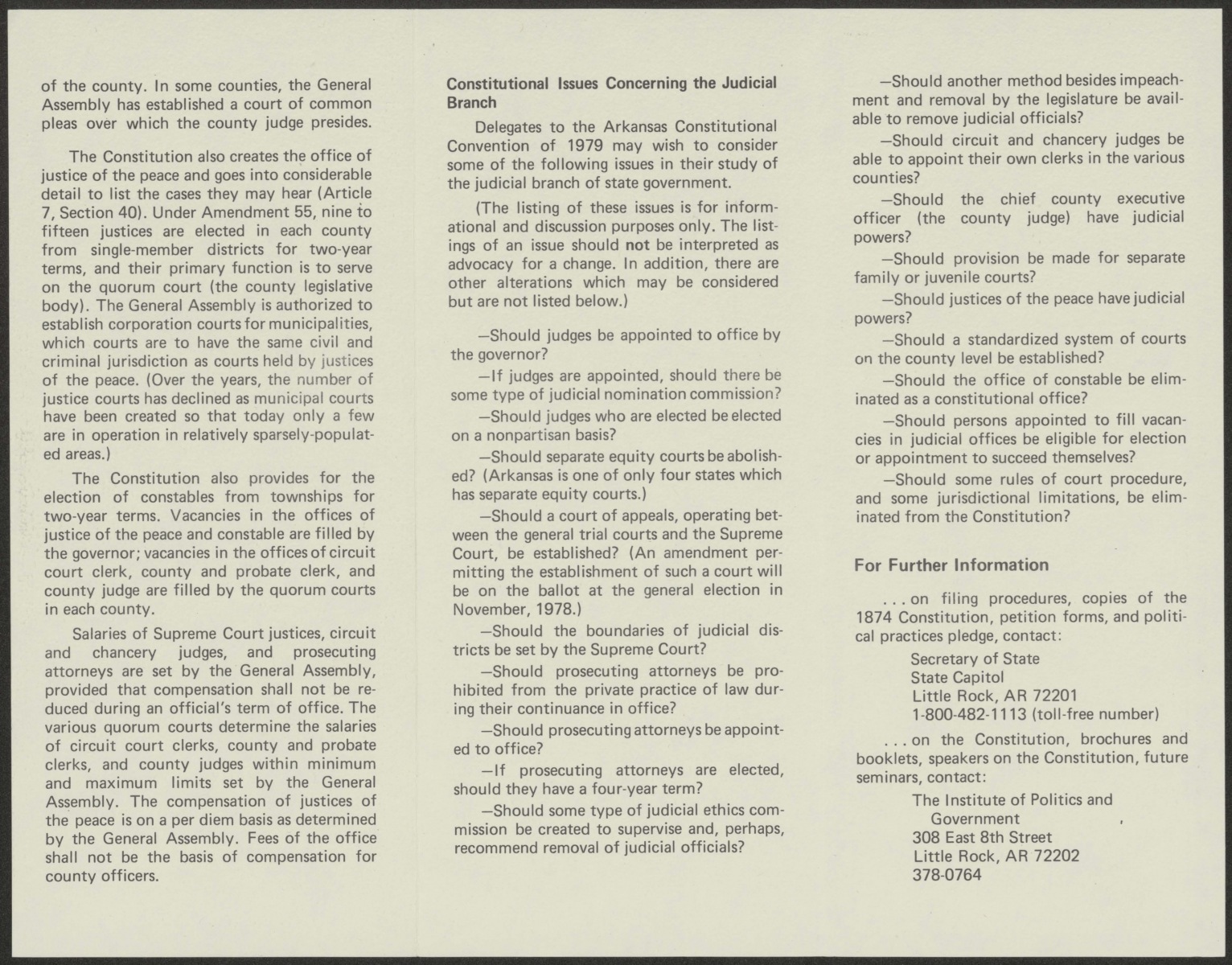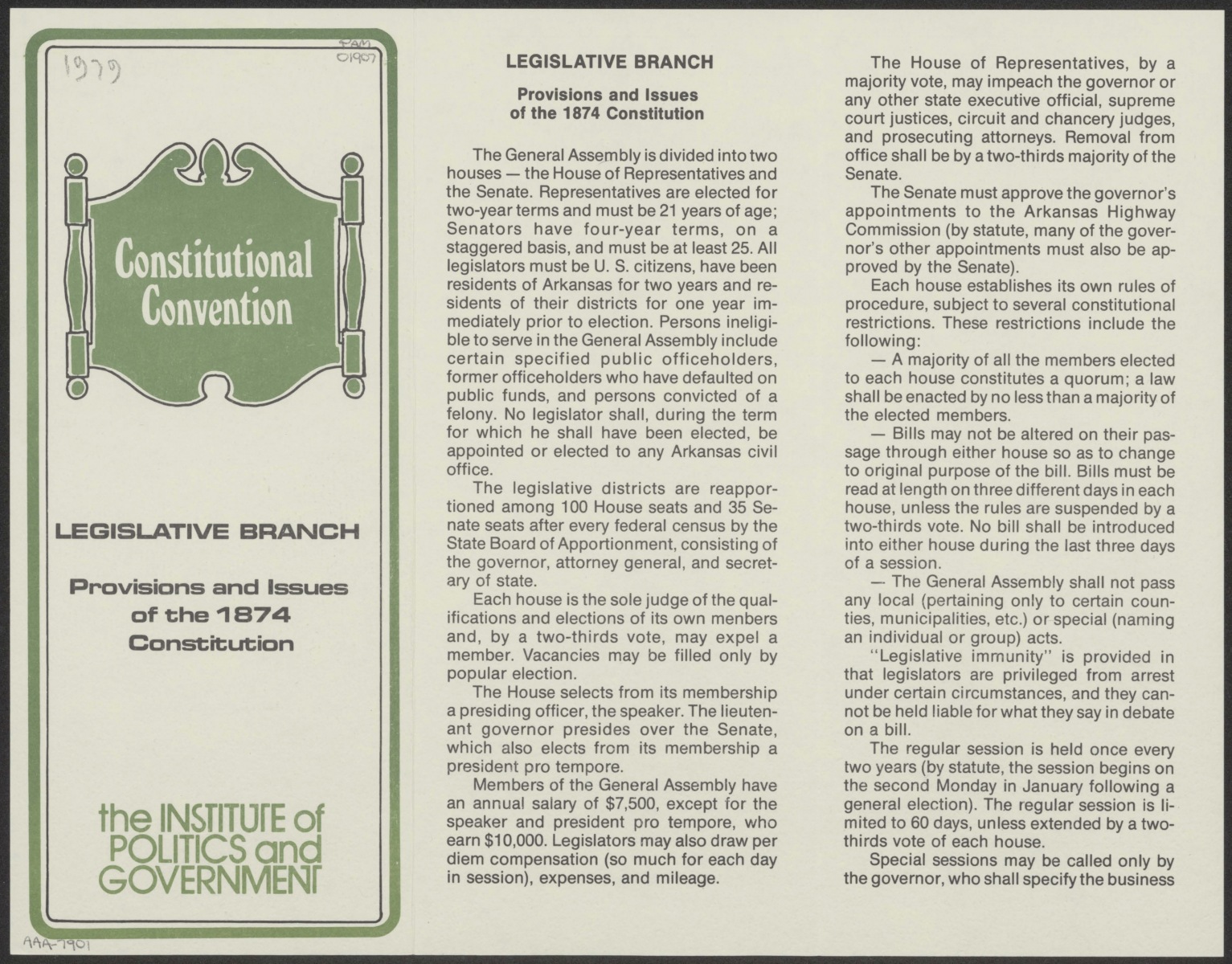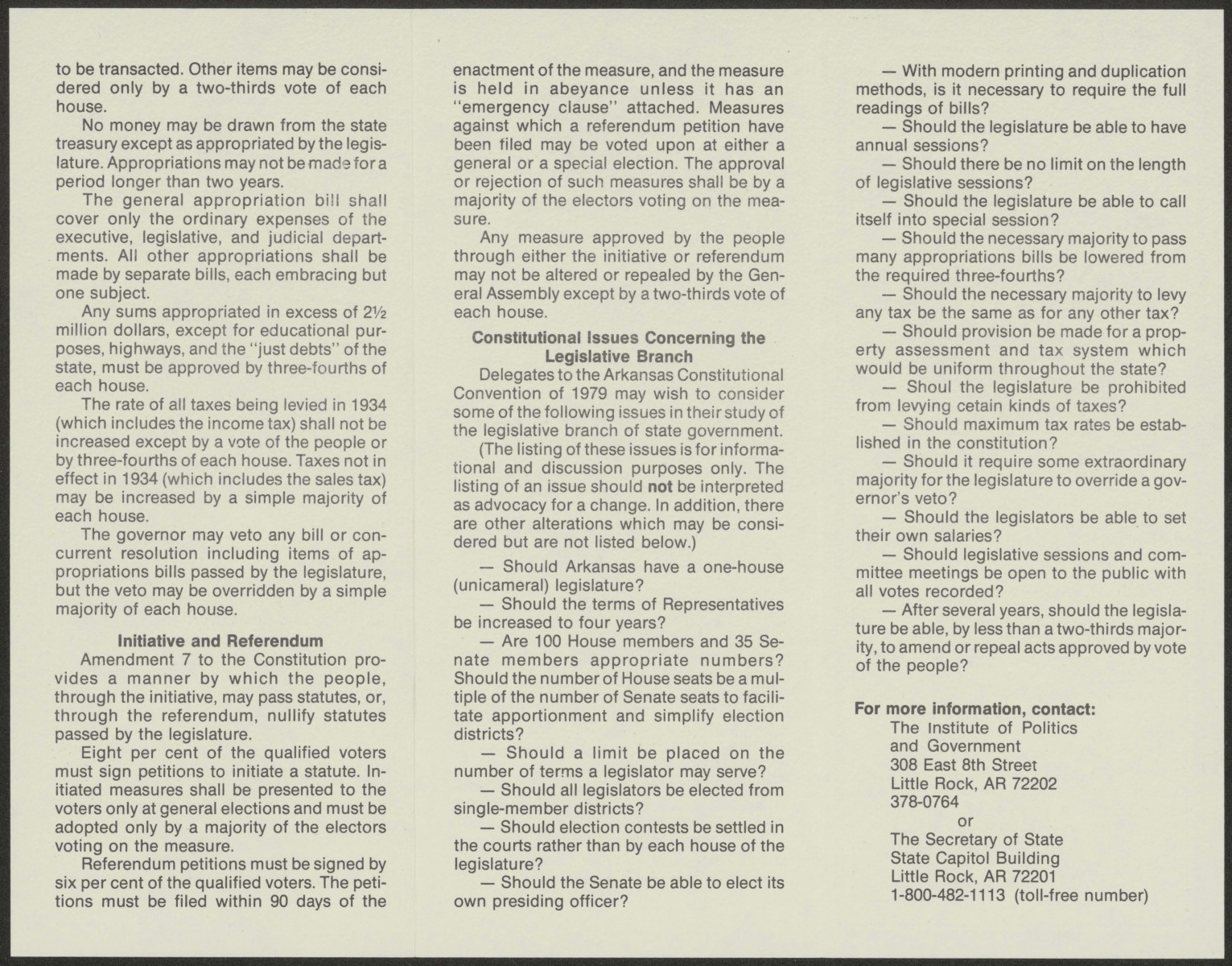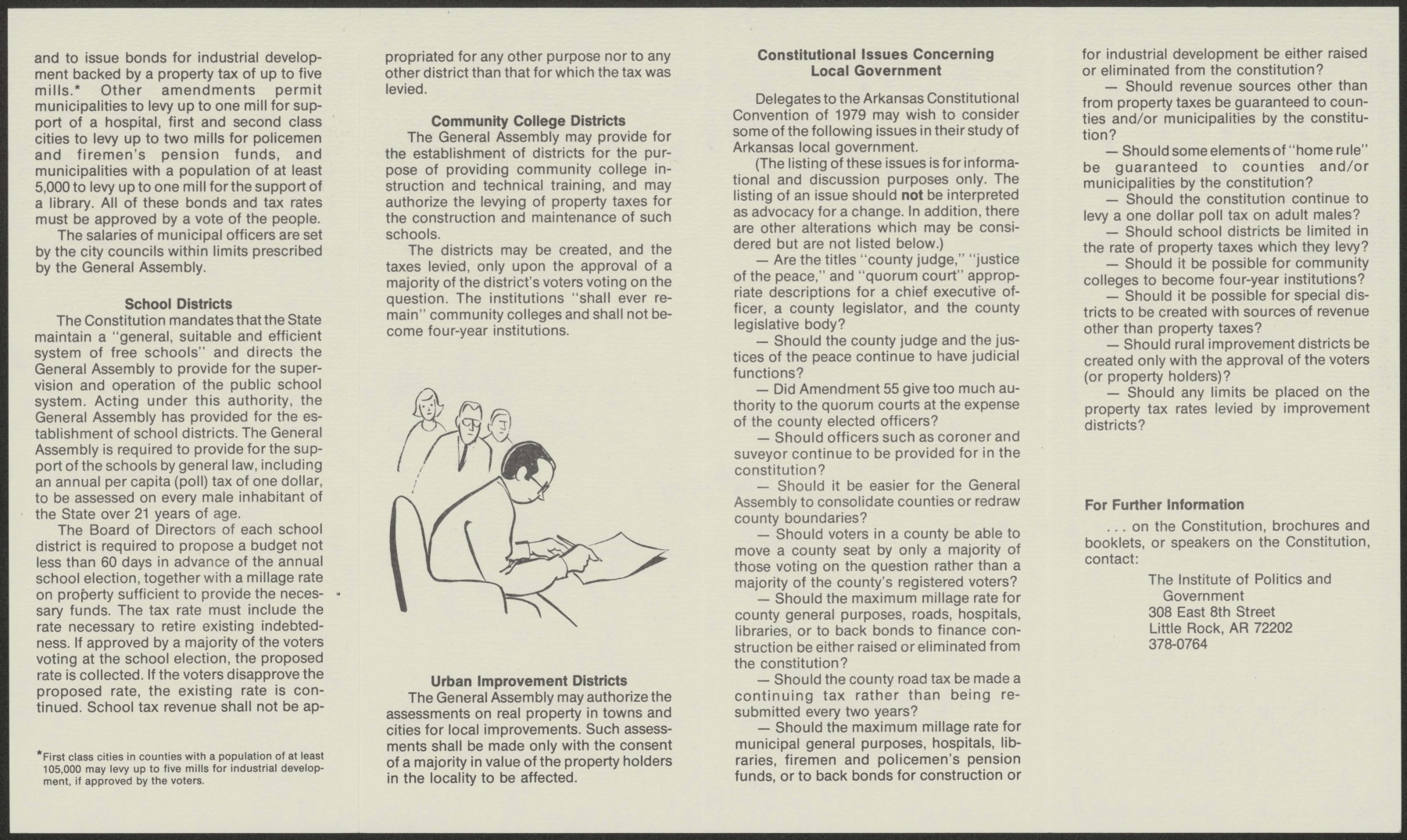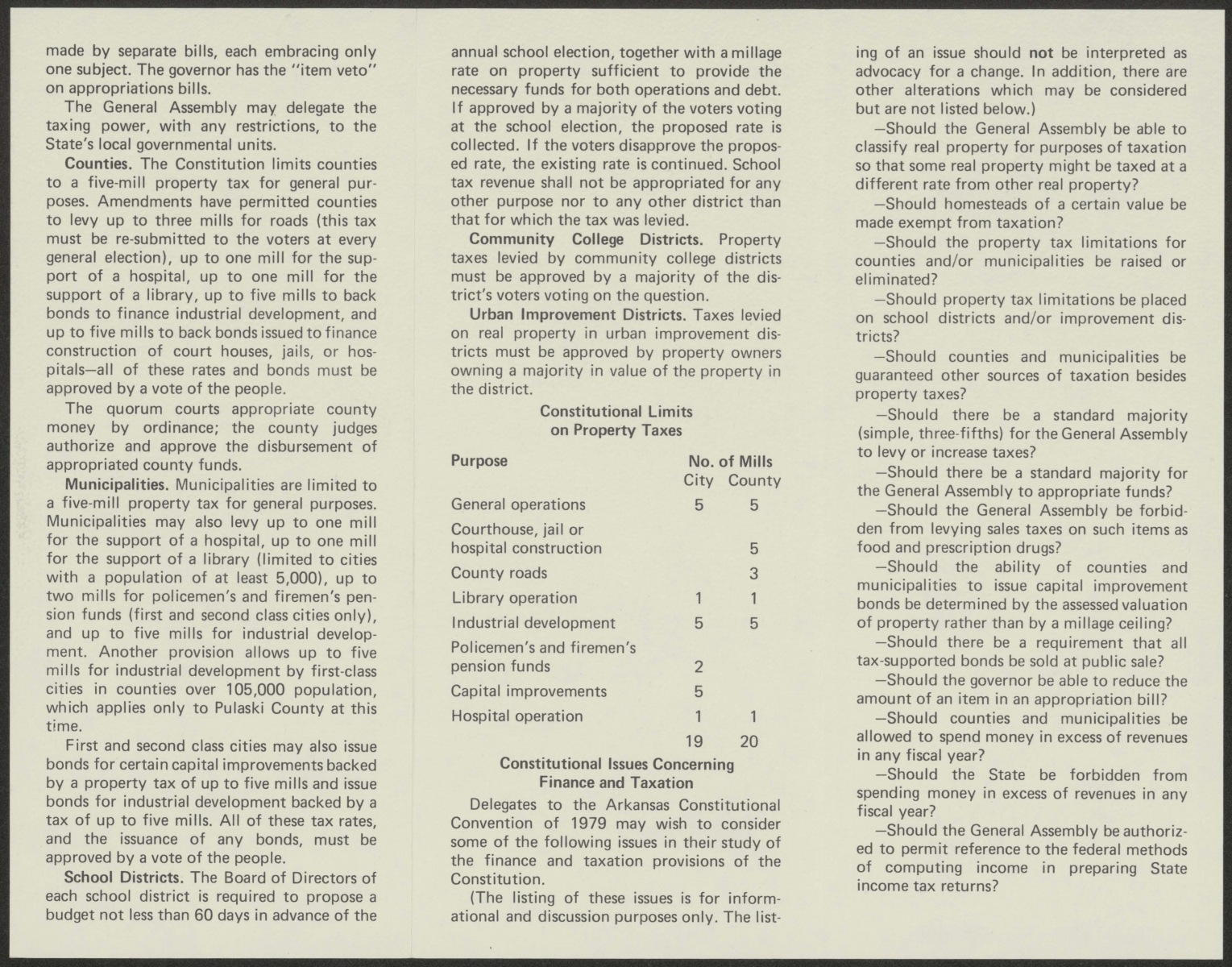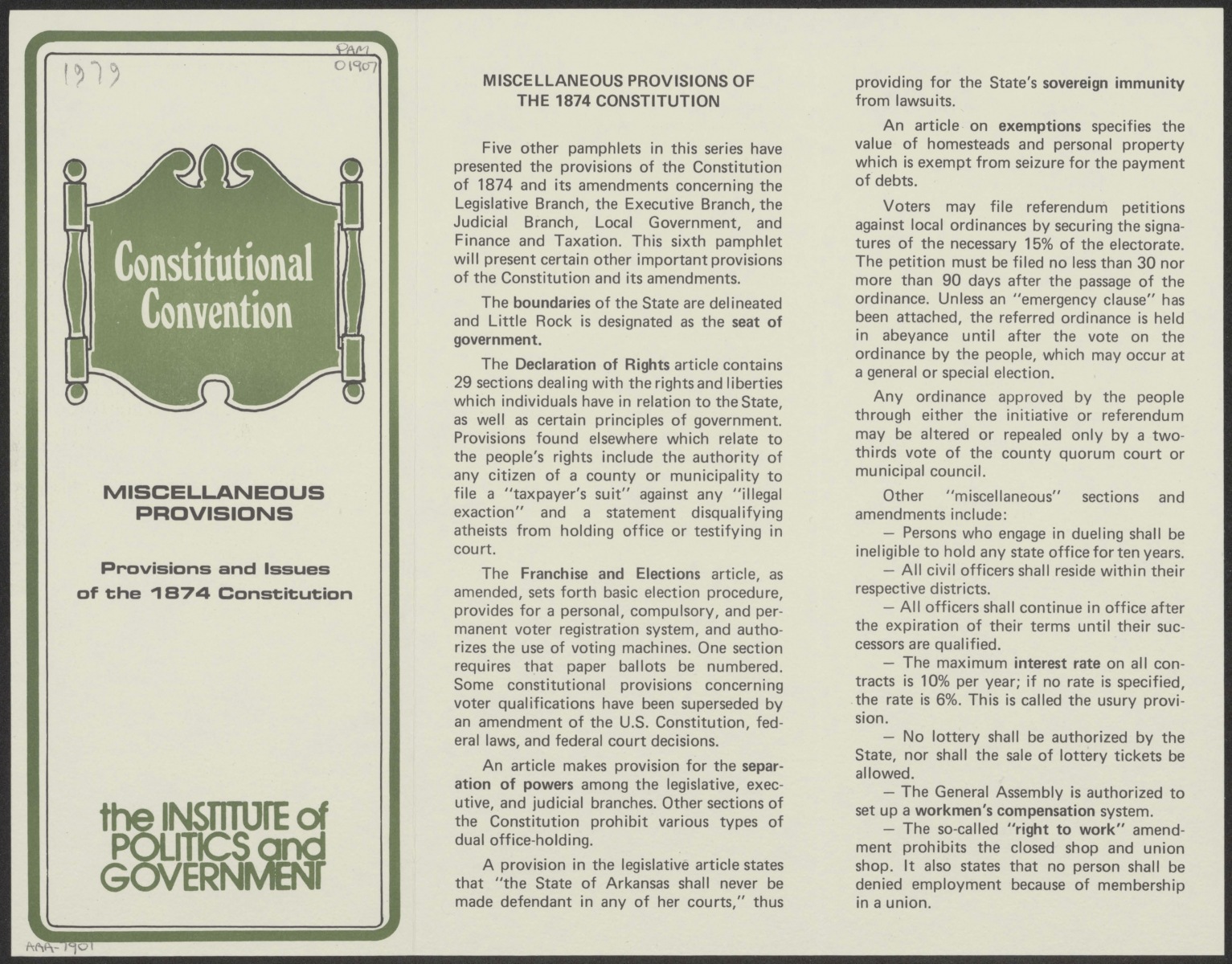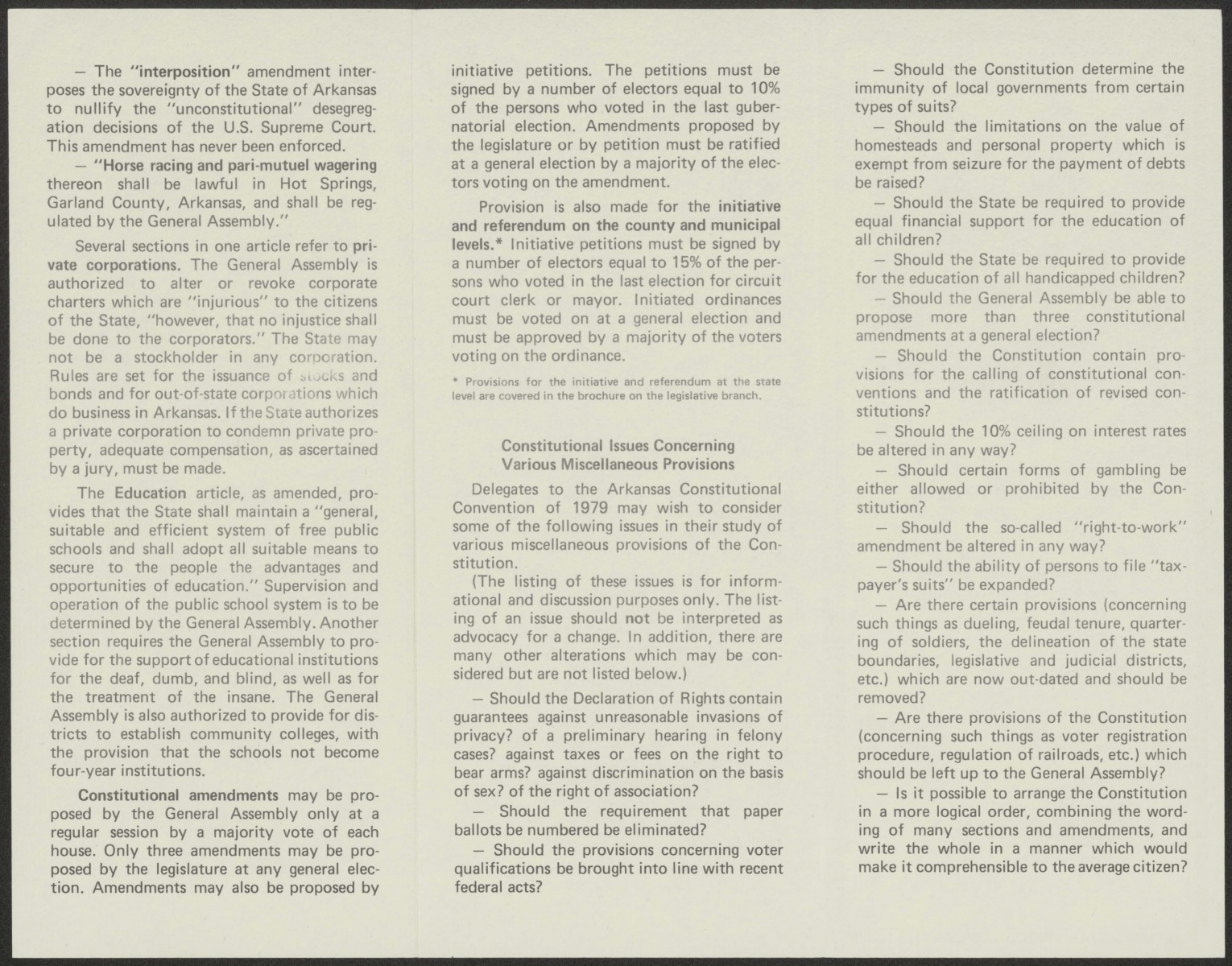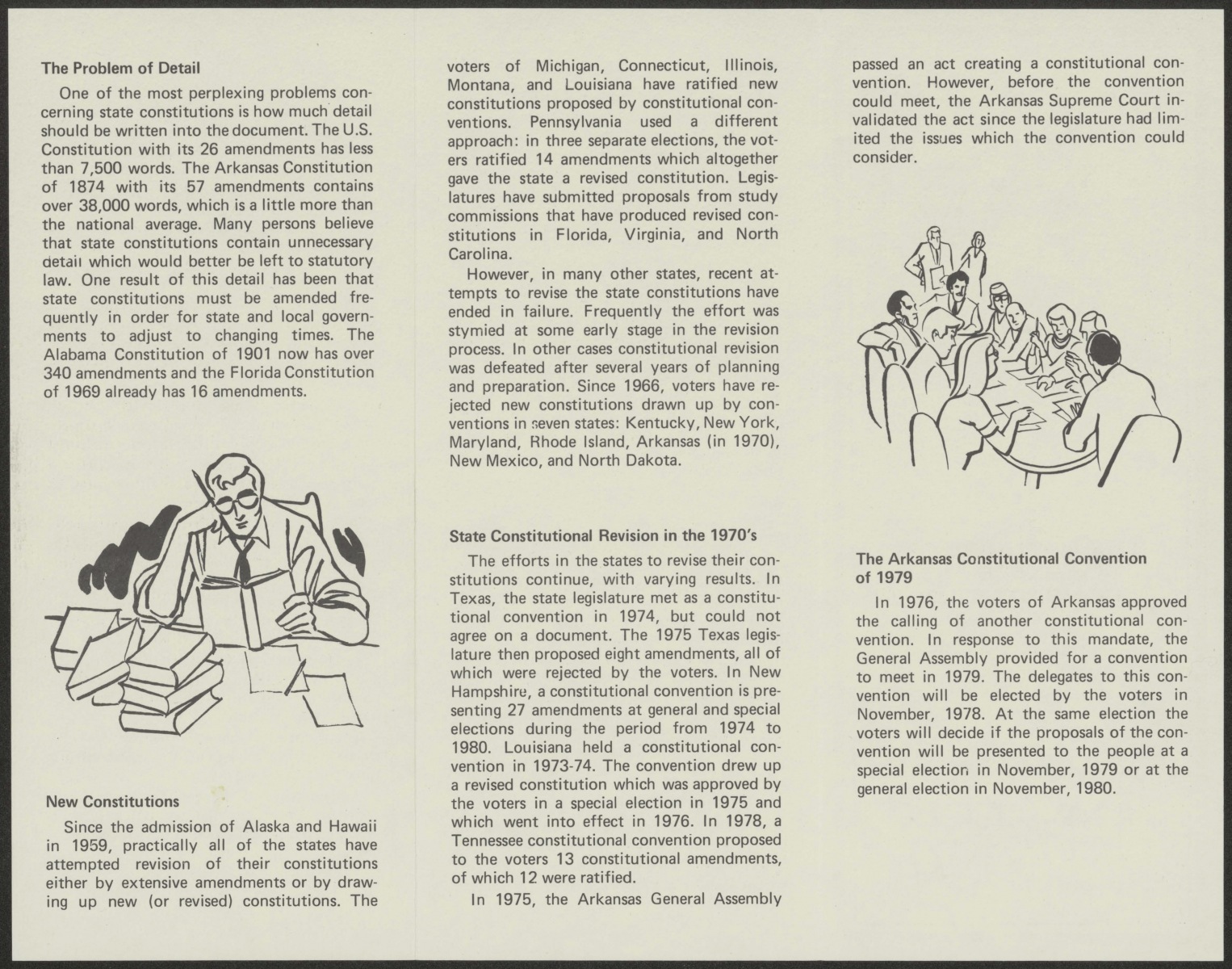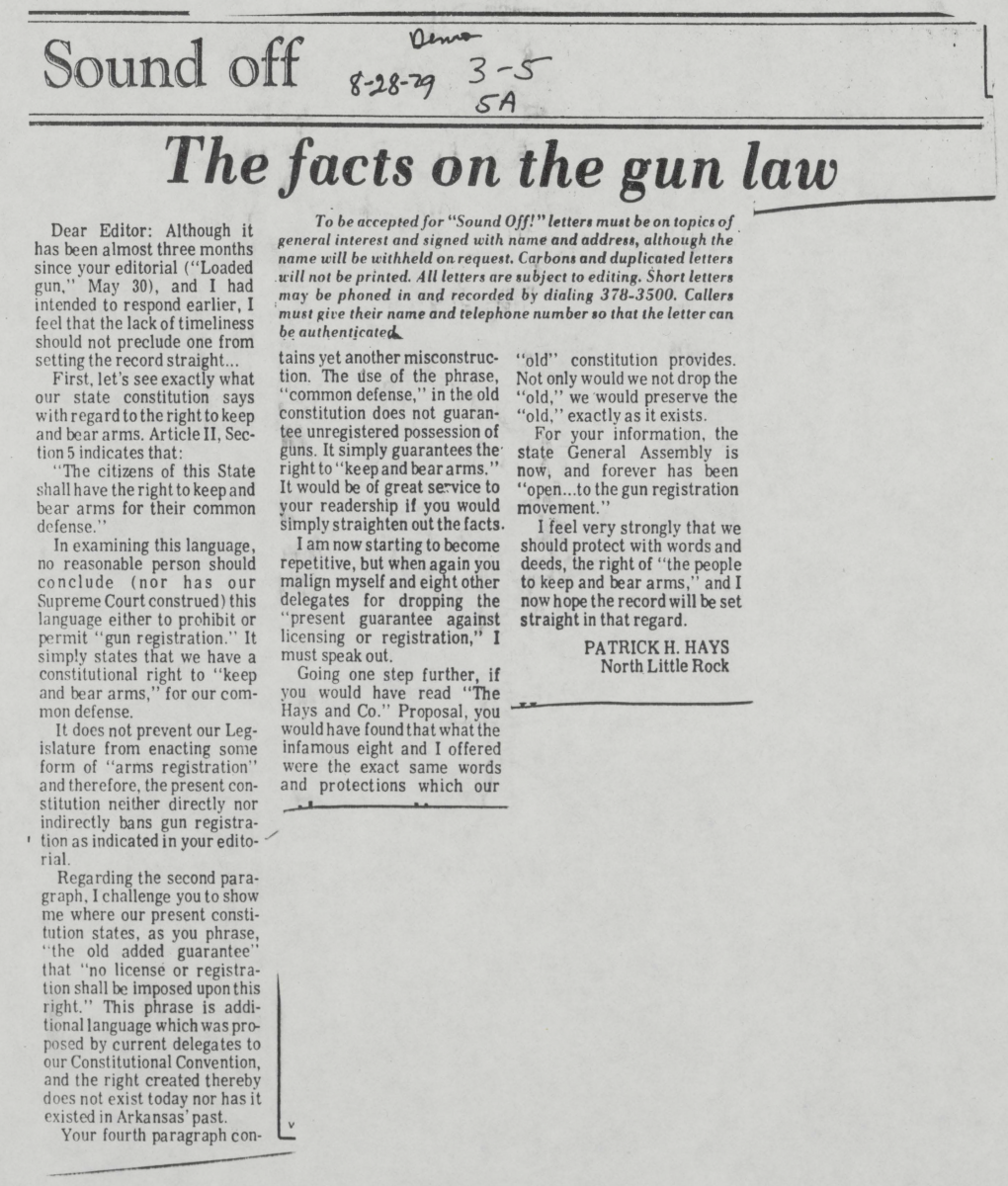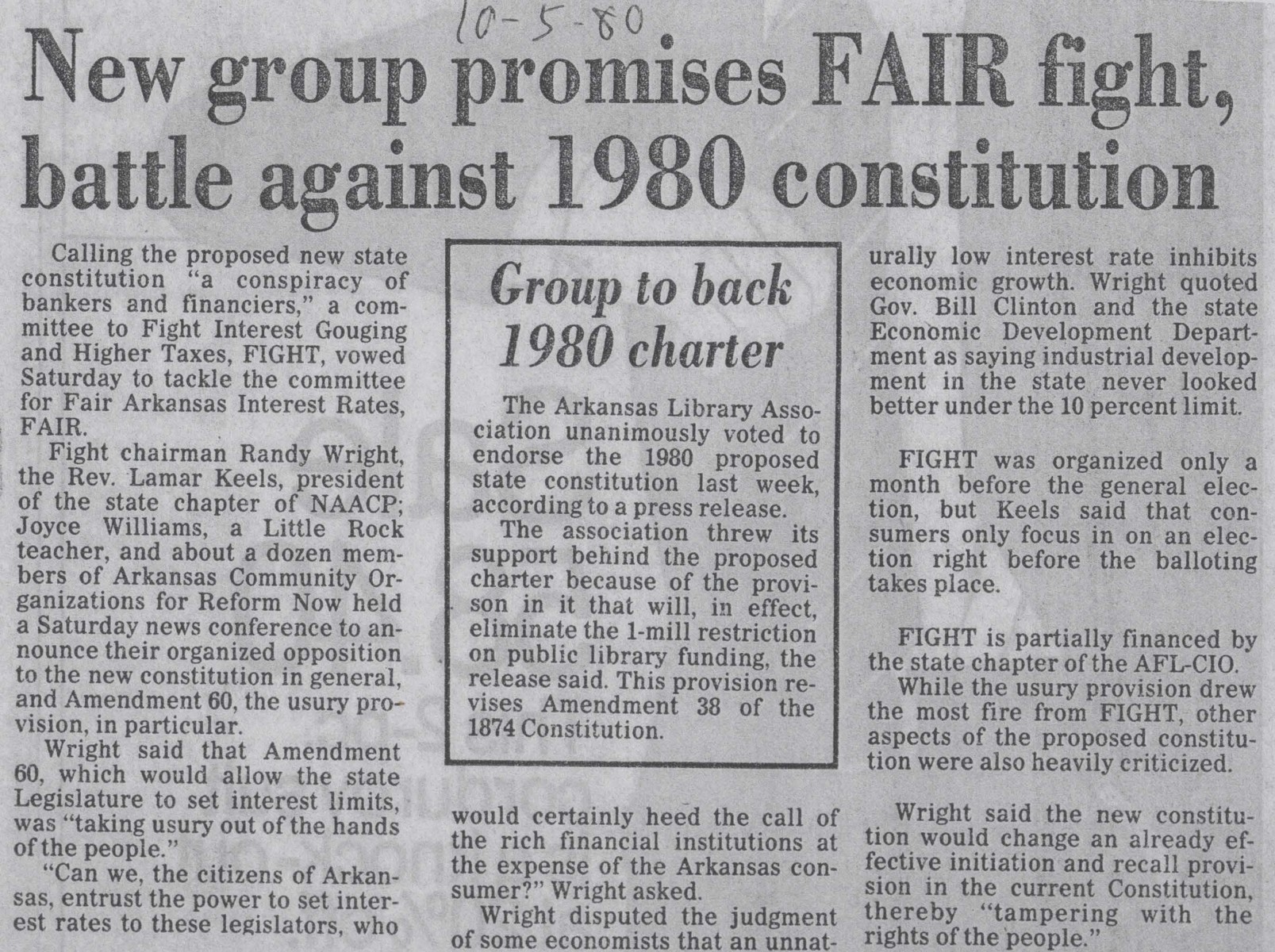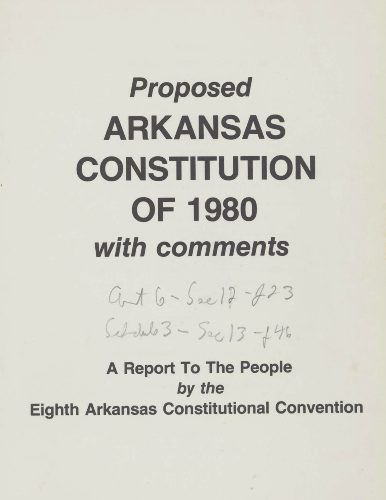Time to Vote
Arkansas's 8th Constitutional Convention
The 1980 election was one of the highest stakes elections in Arkansas’s political history…
Not only were Arkansas voters choosing a U.S. president and a governor, they were also choosing whether to accept a new state constitution. Similar to the U.S. Constitution, state constitutions serve as the foundation of laws, rules, regulations, and government, but at the state level. Over one hundred years had passed since the Arkansas constitution had been rewritten, and it was weighed down by over fifty amendments.
Click on the image to the right to view the whole 1874 Arkansas Constitution or click on the button below to learn more about constitutional amendments.
3...the Preparations
In 1836, Arkansas leaders held the first constitutional convention as they prepared to transition from a U.S. territory into a state. After that, new state constitutions were written primarily in response to major upheavals such as the Civil War. The biggest change in constitutions written after the Civil War was the ban of racial discrimination and slavery. By 1979, Arkansas was still governed by a constitution written in 1874, the last in a series of four constitutions written in the years during and after the Civil War. No major event prompted the 1979 constitutional convention, but many leaders felt it was time for an update. Arkansas voters had rejected a new constitution just ten years earlier, and it was time to try again.
In May 1979, 100 delegates arrived at the Arkansas State Capitol to begin the 8th constitutional convention in Arkansas history. They had been selected by voters in the previous year’s election to represent different regions of the state at the constitutional convention. Click on the map below to find out if a delegate was chosen from your community.
Cal Ledbetter, Jr., one of the delegates chosen from Little Rock, had been part of the previous constitutional convention in 1969 and 1970 and was ready to get to work. He kept a journal of his experiences that we can use to understand the process. Ledbetter wrote that the delegates met for an orientation in November of 1978 to learn how the constitutional convention would work and to understand their roles in the process:
At the first meeting called by Winston Bryant's ad hoc preparatory committee, the delegates were briefed on [the] rules, organization, the convention schedule, and other matters. Talk in the corridors focused on who should be the Chair of the Constitutional Convention. The obvious choice was Robert A. Leflar, who had been chair of the 1969-70 Constitutional Convention, and was dean emeritus and a distinguished professor at the University of Arkansas School of Law. I wrote a letter to him on November 18, 1978 urging him to run for chair.
-December 1, 1978
Despite competition from other nominees, Leflar was elected by sixty-one delegates to lead the constitutional convention. Ledbetter was pleased and wrote in a later article that “this meant that experience and continuity, as well as prestige and respect, would be present.” Ledbetter also counted seventeen delegates like himself who had served in the Arkansas General Assembly, the two legislative houses responsible for making laws for the state on an ongoing basis, and had experience in statewide policy debates. Seventy percent of the delegates reported some prior involvement in politics.
To learn about how bills become laws or about the Arkansas General Assembly, click on the graphics to the right.
2...the Challenges
The strong leadership of the constitutional convention was a good sign, but the delegates immediately began to face challenges. Around the state, only 7% of Arkansans even knew a constitutional convention was underway. To make things more difficult, the Arkansas General Assembly did not provide enough funding to cover all of the convention expenses. One key budget item for the convention was the production of pamphlets and outreach materials to inform more Arkansans about the new constitution and the upcoming vote. Without enough funding, the delegates would not be able to get the word out.
The delegates were also continually stumped about which laws should be included in the new constitution and which ones were more appropriate as policy made by the Arkansas General Assembly. The constitution typically includes only broad, higher-level guiding standards and rules for how the three branches of government should operate because it is very difficult to amend. The General Assembly, on the other hand, meets every two years and passes hundreds of new policies and laws each time on smaller matters.
1...the Changes
Because of the lack of public awareness about the constitutional convention, the delegates had very little feedback from the voters they were representing to help guide their decisions. Luckily, delegates had previous constitutions to use as a guide. They decided to build from the constitution made in 1970 at the last constitutional convention despite the fact that voters had rejected that version. While it provided a framework, the delegates still had to decide what to keep and what to change. Radical changes were unlikely to be accepted by the general public on voting day.
Even the outdated 1874 constitution had important contributions to make. Delegates did not want to change the basic structure of government in Arkansas. For example, they thought that the Arkansas General Assembly should still include the House of Representatives and the Senate. They also did not change the number of representatives or the length of their terms of office. Ledbetter said that these structures had “stood the test of time.”
One of the biggest debates during the constitutional convention was about interest rates on bank loans. When someone borrows money from a bank, they agree to pay the money back slowly over a period of time. They also pay interest, or an additional amount that is calculated as a percentage of the amount they borrowed. The Arkansas constitution contained a cap on interest rates. Banks could not charge borrowers more than 10% interest on their loans. Business owners wanted to raise that cap. The delegates decided to keep the interest rate cap at 10%, but added powers to the legislature, allowing them to change that cap with a ¾ majority vote.
The delegates also argued over the right to bear arms and the protection of the environment. Some delegates favored simple language about the right to bear arms that mirrored the United States constitution, while others wanted to add language prohibiting the state from requiring residents to register or license their guns. Similarly, environmental advocates wanted to ensure the right of Arkansans to a clean environment would be stated within the constitution’s Declaration of Rights while others concerned about challenges to private property rights proposed softer language. The delegates reached compromises on both of these issues.
Key additions to the proposed constitution included a right to privacy, a right to obtain information about the government and how it operated, and a statement that no one could be denied equal protection of the laws because of race, gender, national origin, "or any other ground.”
After these and dozens of other changes, the delegates voted unanimously to approve the proposed new constitution and send it to the voters for a decision. Ledbetter wrote in his journal that day:
The 100 to 0 vote was incredible. This was not done in [the] 1917-18 or 1969-70 [constitutional conventions]. We all signed the new constitution, beginning with Leflar, then the four vice-presidents, and then the delegates alphabetically. Everyone seemed to have very positive feelings about passage, and everyone agreed it was vastly improved over what it had been two weeks before.
-June 30, 1980
0...the Vote
The new constitution was endorsed, or given public support, by Governor Bill Clinton and a long list of organizations across the state. Other groups came out in opposition to the new constitution. A coalition opposed to the new constitution called FIGHT (Fight Interest Gouging and Higher Taxes) formed out of fear that the Arkansas General Assembly would use their new power of changing interest rates to side with bankers against the best interest of citizens. Opponents also argued that the changes to city and county government as outlined in the new constitution would cost the state, and thus taxpayers, millions of dollars.
The constitutional convention produced an explanatory document called “A Report to the People” that was sent out to voters across the state to inform them about the proposed constitution they would be voting on in November 1980. To read the document and learn more about all of the changes proposed by the constitutional convention delegates, click on the photo of the Proposed Arkansas Constitution of 1980: A Report To The People at the bottom left.
Voters defeated the proposed constitution by a landslide, but the issues raised by delegates are still debated today. Some changes proposed in the failed 1980 constitution have been made by the Arkansas General Assembly over time. Other changes have since been turned into amendments for the 1874 constitution, which we still use today with more than 100 amendments. Now that the constitution is nearing its 150th birthday, perhaps it is time for our leaders to consider initiating another constitutional convention and setting Arkansas on a fresh course for the 21st century.

